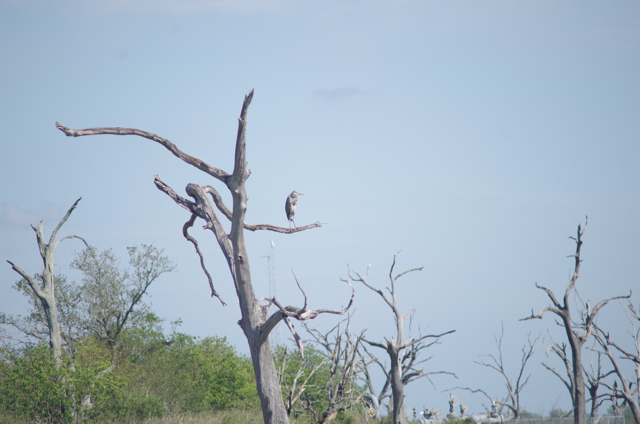
Local and Traditional Ecological Knowledge – and Those Who Keep It
by Catherine Schmitt
I.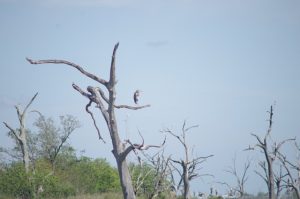
Along the edges of bayou canals, shrimp boats were gearing up for the season, butterfly nets rigged and ready to drop, herons and laughing gulls flying from bank to bank. Along the shore, people young and old fished for spotted sea trout and redfish. Some stood on sinking docks, others sat in folding chairs. The noonday sun was high in a blue sky.
Beyond the fishing camps and the roads that lead to the camps, the bayou opened into an expanse of water and marsh, a horizontal world intersected by bleached skeletons of live oaks and the slanted white crosses of grave markers and a handful of fishing shacks accessible only by water.
And there is so much water and so little land left. The shorelines of fringing vegetation that once enclosed Lake Chien, Lake Tambour, Lake Felicity are gone. Where oil and gas companies cut lines through the marsh to mark their territory and drill below ground and lay their pipe, water rushed in, creating canals that widened over time, eroding the marsh from the inside out. “Flood control” engineering of the Mississippi River has prevented the natural river flow and sediment that builds the marshes. And rising sea levels are accelerating the erosion and land loss.
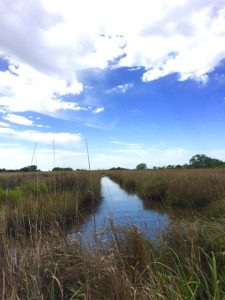 Chairman Chuckie Verdin and Second Chairman Donald Dardar of the Pointe-au-Chien Indian Tribe know how much has changed, and where, and when. But with a new levee and newly elevated houses, the Pointe-au-Chien believe they can stay in place, maintaining their way of life that is inseparable from the surrounding land and water.
Chairman Chuckie Verdin and Second Chairman Donald Dardar of the Pointe-au-Chien Indian Tribe know how much has changed, and where, and when. But with a new levee and newly elevated houses, the Pointe-au-Chien believe they can stay in place, maintaining their way of life that is inseparable from the surrounding land and water.
Brown pelicans and royal terns soared overhead as they pointed out where a few inches separated high ground from water. The Tribe is doing what they can to protect what is left: an earthen mound considered a sacred site, old homestead ruins beneath a huddle of trees, cemeteries, fishing stands. They raised their houses, planted trees and gardens, built new marshes, and mapped the changes. This is where they want to stay.
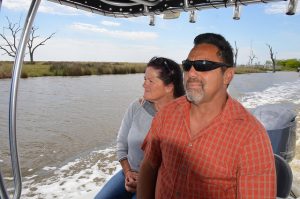 A few miles to the west, in another expanse of water and marsh beyond the levee protection system, flooding forced members of the Isle de Jean Charles Band of Biloxi-Chitimacha-Choctaw to choose to relocate their community. Their home has shrunk from 22,000 acres to 320 acres, and most families moved away. The few who remain fish in open water where they once trapped muskrat and turtle in the marshes. Flooding can occur at any time with a high tide and a strong southeast wind.
A few miles to the west, in another expanse of water and marsh beyond the levee protection system, flooding forced members of the Isle de Jean Charles Band of Biloxi-Chitimacha-Choctaw to choose to relocate their community. Their home has shrunk from 22,000 acres to 320 acres, and most families moved away. The few who remain fish in open water where they once trapped muskrat and turtle in the marshes. Flooding can occur at any time with a high tide and a strong southeast wind.
“We used to live off the land. Now, we just live on the land,” said Chief Albert Naquin. In his 71-year lifetime, he has witnessed the loss of 98 percent of the land. At first he rejected initial calls to resettle the community on higher ground as a “modern-day Trail of Tears.” But after each successive hurricane did more damage, and his house flooded again and again and his daily commute was often mired in salt water, and more people moved away, he changed his mind. “It’s not good. People have moved away and are spread out.” The community, the culture became fractured.
The relocation plan, despite receiving $48 million in federal disaster aid funds, has been held up due to complications with the State of Louisiana and other local communities.
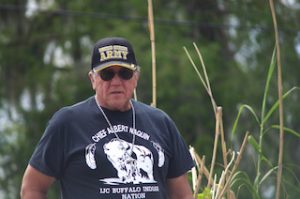 As people who have lived in one place, and been sustained by that place, for generations, the Pointe-au-Chien and the Isle de Jean Charles know the ecology and landscape of South Louisiana. It is part of Matthew Bethel’s job with Louisiana Sea Grant doing research to ensure that their knowledge is honored and applied more broadly to enhance decisions about managing land and water.
As people who have lived in one place, and been sustained by that place, for generations, the Pointe-au-Chien and the Isle de Jean Charles know the ecology and landscape of South Louisiana. It is part of Matthew Bethel’s job with Louisiana Sea Grant doing research to ensure that their knowledge is honored and applied more broadly to enhance decisions about managing land and water.
“Science and traditional ecological knowledge can be viewed as complimentary information, that is, as two narrative threads that enrich, expand, and illuminate a common story. Including Indigenous voices in environmental decision-making processes can contribute new knowledge from years of on-the-ground observations,” said Bethel.
II.
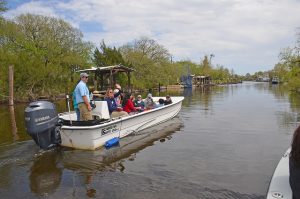 Sea Grant work extends from the drowning marshes of South Louisiana to the salt flats of Hanapepe, Kauai, the salmon streams of Alaska, ancient clam gardens of the Pacific Northwest, wild rice waters of the Great Lakes, fishing villages of the Outer Banks, sea islands of the Southeast Atlantic, and fishing grounds of the Gulf of Maine. These are places where people interact with nature on a daily basis, and this interaction is part of their identity and sustains their community from generation to generation. More and more, scientists and conservationists are seeking out this knowledge as they attempt to understand and restore ecosystems and landscapes.
Sea Grant work extends from the drowning marshes of South Louisiana to the salt flats of Hanapepe, Kauai, the salmon streams of Alaska, ancient clam gardens of the Pacific Northwest, wild rice waters of the Great Lakes, fishing villages of the Outer Banks, sea islands of the Southeast Atlantic, and fishing grounds of the Gulf of Maine. These are places where people interact with nature on a daily basis, and this interaction is part of their identity and sustains their community from generation to generation. More and more, scientists and conservationists are seeking out this knowledge as they attempt to understand and restore ecosystems and landscapes.
The accelerated pursuit of local knowledge, which often lives in remote and marginalized communities, suggests that most people living in America today have no “ecological knowledge.” Identity, community, and culture have nothing to do with local nature.
The story of this separation is long and tragic, but it can be undone. Perhaps among Sea Grant’s greatest work are efforts to reconnect people and place by recording oral histories and sharing stories, celebrating people and places, and teaching. Even in Alaska, people had forgotten the names of birds and the creatures revealed at every low tide. What began with nine short walks in Juneau and classes on traditional spruce-root weaving in the 1970s expanded to a “Sea Week” of culturally responsive science lessons and field trips. Today, the Alaska Seas and Watersheds curriculum incorporates place-based knowledge and culture into education, and community members are the teachers and guides.
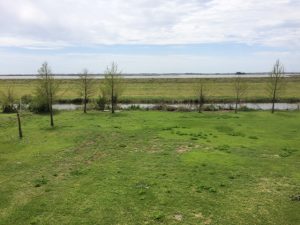 “Too often, the people are lost in discussions of traditional ecological knowledge,” said Austin Shelton, of the University of Guam Sea Grant Program. Much is lost when knowledge is separated from those who keep it.
“Too often, the people are lost in discussions of traditional ecological knowledge,” said Austin Shelton, of the University of Guam Sea Grant Program. Much is lost when knowledge is separated from those who keep it.
Which is why for Sea Grant, there is an equal if not greater desire to support the human communities, and ways of life that depend on access to nature. “Thinking about knowledge is thinking about place, and its meaning,” said Davin Holen, an anthropologist with Alaska Sea Grant.
According to Byron Mallott, clan leader of the Tlingit Raven Kwaash Kee Kwaan Clan and Alaska’s Lieutenant Governor, there is space for the voices of Indigenous and other place-based peoples in discussions of climate change and other global crises. A space where “every belief is valued and every value is believed. A new, frightening, but also incredibly open space.”
The Sea Grant Network is currently drafting a vision for local knowledge work over the next decade. The vision document will contain the case studies referenced here along with others, and a set of best practices identified through our decades of experience working with people and places.
